· 9 min read
A Primer On eSports
Harry Lawrence
Games Industry Analyst
On March 22, the Las Vegas Strip welcomed its first eSports arena. eSports Arena Las Vegas, a 30,000 sq. ft. venue that hosts large live gaming events, stands as a physical symbol for where the industry currently stands, and how far it has come.
10 years ago, in March 2008, Soulreapers/pure.gaming won the Play.com UT3 National Championship Final and took home £30,000 (about $71,000, adjusted for inflation). Four days before the Las Vegas arena opening, however, the Russian team won $800,000 from a prize pool of $1.5 million during the Dota 2 competition at WESG 2017 .
Simply put: an eSports team in 2018 won over 11 times the prize money in a single competition than a team in 2008 won from an entire tournament. Starker still, in 1998, there were a total of 9 tournaments and 34 players in the entire year. This simple trajectory is a microcosm for the meteoric rise of the industry, and explains why eSports has gained increasingly substantial media coverage.
The sudden appearance of eSports in mainstream media has left many wondering exactly what it is, and how and why it has grown in popularity so quickly.
[bctt tweet=”Late to the eSports party? Find out what it is, and how and why it’s grown in popularity so quickly.” username=”GameAnalytics”]
The Early Days
The technological scene in the late 1990s was very different to what we see today. While there was the World Wide Web, there was no such thing as social media or video streaming. This made it very difficult for players to connect on any meaningful level.
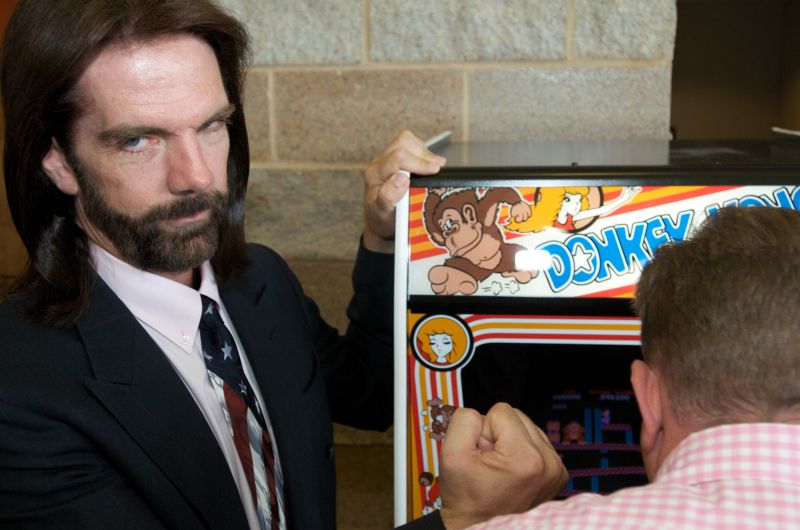
In this era, games weren’t released to the volume they are now. Fewer titles being released meant that players could spend more time on particular games and become extremely skilled at them. In 1985, Billy Mitchell was added to The Guinness Book of World Records for attaining the highest scores in six arcade games (although, incidentally, he is now under fire for one of his records).
Video games such as StarCraft and Street Fighter were simple in design, but deep in terms of gameplay. This led to a demand for a common platform where these skills could be of value – one that didn’t yet exist.
Technology was fast improving, however. In 1996, id Software released Quake, one of the most influential video games of all time. Not only was it was the first action game to be modelled completely in 3D, which established tight controls, but it was the first ever game with multiplayer maps and a client-server architecture. This set the stage for online multiplayer games.
Quake was at the heart of a high profile gaming victory integral to the history of eSports. In 1997, one of the first nationwide video game competitions in the United States was held – Red Annihilation. Just under 2,000 players competed in the online Quake tournament, which led to 16 offline finalists. Dennis Fong placed first, and was famously awarded id Software CEO John D. Carmack’s 1987 Ferrari 328 GTS. He officially became the first professional gamer.
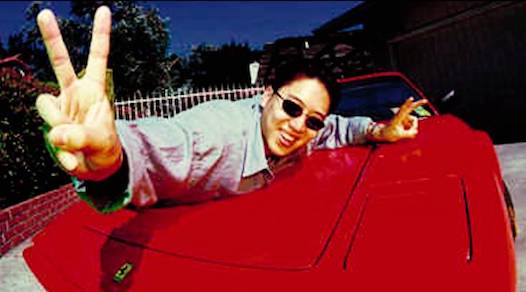
South Korea
One of the places in which there was particularly high demand for a skilled competitive environment was South Korea. Today, the country boasts the fastest internet speed in the world, but the infrastructure that enables it was being set up at around the same time StarCraft was released in 1998. The number of net cafés in the country exploded, and StarCraft became a game of choice for a large part of the population.
In the same year, South Korea created its first professional gaming league. Because of the healthy appetite already in place, it didn’t take long for professional teams to form. In 2002, Samsung began to sponsor professional StarCraft teams, which was a monumental development in the industry’s journey towards legitimacy. By now, millions of people regularly watched StarCraft’s broadcasting.
The spread wasn’t just limited to South Korea. From 2000, tournaments skyrocketed due to landmark launches like the World Cyber Games and the Electronic Sports World Cup. In 2002, Major League Gaming (currently one of the most recognisable brands in eSports) launched, with the resources to hand out sums of prize money that were unthinkable a decade before.
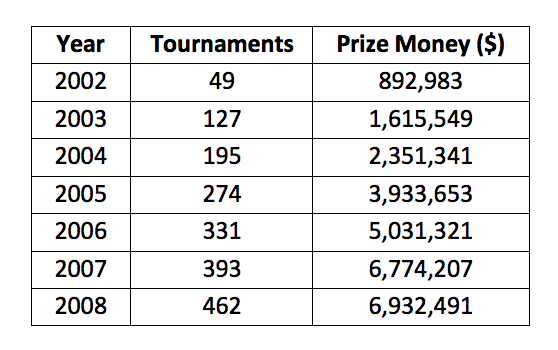
While tournaments and industry value grew over the following years, there was still a problem that lingered. “I can remember the early days, back in the 1990s, when tournaments were recorded on VHS tape,” recalls Sundance DiGiovanni, co-founder and CEO of Major League Gaming. “It was a process that sometimes took days.” From this universal ire came livestreaming. But, the technology was expensive and often not of a high enough quality.
It was in 2011 that the platform problem was finally solved with the launch of Twitch, a streaming service dedicated to gaming. Twitch is considered to be a landmark in the history of eSports as it effectively centralised all players from all games into one location, which made it possible for the best players in the world to form full-time teams using sponsorship revenue.

2013
One of the biggest games in eSports, both by number of tournaments and by prize money, is League of Legends, first released in 2009. The number of League of Legends World Championship players increased from 1.7 million in 2011 to 8.2 million in 2012. Then, in 2013, the game saw its number of players climb to an astonishing 32 million.
This was a significant year for eSports. In the same year that League of Legends was enjoying historic viewership, Dota 2 was released in July. Dota 2 is now the most lucrative eSports game to date, with just over $137 million won from 890 tournaments. The very next month, Riot Games held the League of Legends Final at the Staples Center in Los Angeles. The venue sold out in an hour.
The Staples Center triumph propelled eSports significantly further into mainstream media, which had struggled so far to take the industry seriously. But the most important event in eSports history came around the same time, as in July 2013 the US government began to recognise eSports players as professional athletes.
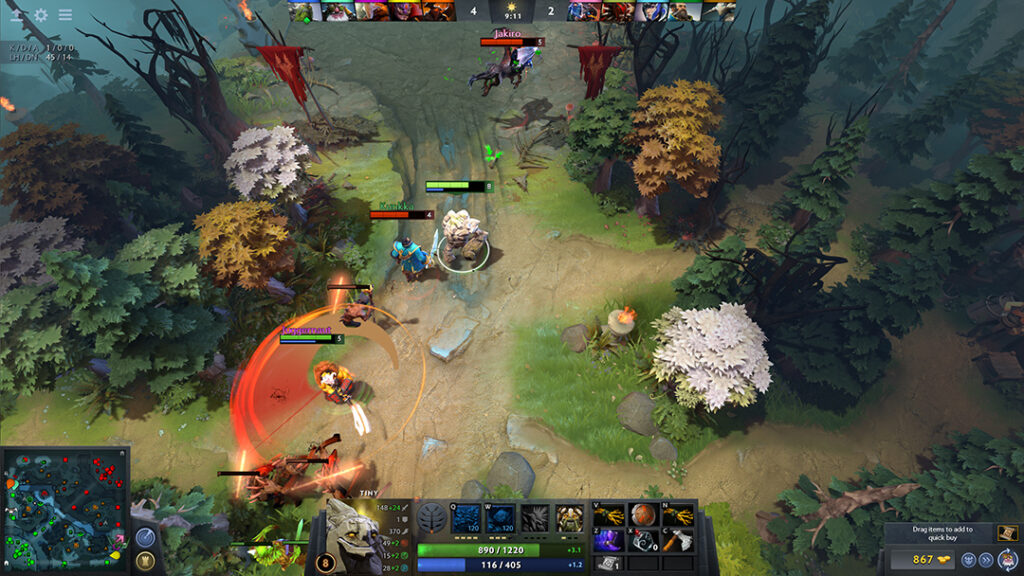
The ‘Sports’ Debate
The rise of eSports has not been without pushback. In August 2015, Jimmy Kimmel posted a YouTube video mocking the launch of YouTube Gaming, the site’s new streaming platform for gamers. In what is now widely received to be a massive misreading of the legitimacy of the industry, the video quickly became the show’s most disliked video.
A common rebuttal to the Kimmel video has been that his analogy of “watching other people play video games is like going to a restaurant and having someone eat your food for you” is misguided and old-fashioned. As is frequently pointed out, his own analogy could apply just as easily to professional sports or even his own show.
Kimmel’s video represented a point of view that still has a great deal of subscribers: that eSports are not sports. In a similar vein to the loot box controversy, there seem to be significant camps on either side of the issue.
[bctt tweet=”In the last 20 years, eSports has grown from a niche to a multi-million mainstream empire. Find out how with this primer on eSports and its history.” username=”GameAnalytics”]
On the one hand, there are parallels between conventional sports and eSports. In eSports tournaments, teams train hard to win. There are scoring systems, an element of precision and game rules, including certain equipment regulations. Teams are headed up by managers and coaches who formulate strategies, and referees make judgements on the side-lines, and there are even reserve players and starter players. Teams are also incentivised by financial rewards, and top players can become famous.
On the other hand, the overwhelming majority of conventional sports involve physical exertion and challenge the body more than the mind. It could be reasonable for society to group phenomena based on shared characteristics, and there is clearly a visceral connection to physicality that makes many people reluctant to group something like League of Legends with something like baseball.
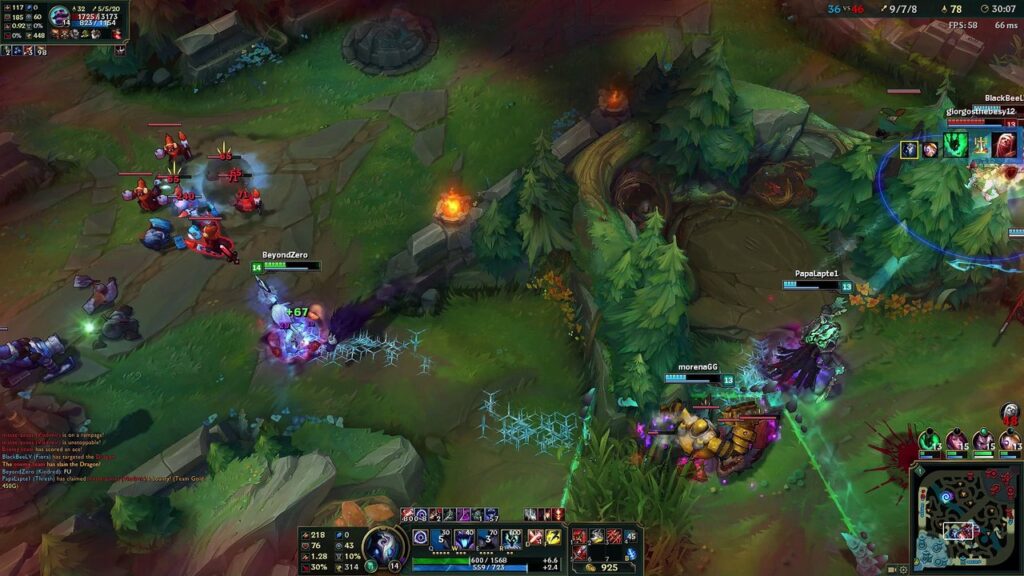
Riot Games itself has chimed in on the conversation. There is also a third point of view – the answer doesn’t matter. Both sports and eSports are skill-based competitions that other people watch, and maybe the answer to the question is simply accepting that there are different societal values for each skillset. eSports has been around for two decades, and physical sports have been around for thousands of years, but there is no reason they cannot coexist.
The Future of eSports
In any case, the current and future growth and success of eSports is evident. In 2015, over 36 million unique viewers tuned in to watch the final League of Legends World Championship Finals, more than both the World Series and the NBA Finals that same year. By the end of the year, business publications were promoting eSports as an investment opportunity, and by the end of 2016, basketball players Shaquille O’Neal and Magic Johnson had already invested.
Interestingly, sports personality and host of The Herd Colin Cowherd came out with disparaging remarks about eSports in 2015, saying that it is “for booger-eaters.” Yet in May 2016, he, too, considered investing in eSports.
eSports has come far in 20 years, but while it might be rivalling professional sports leagues in terms of viewership, the financials are a different story. The NFL was expected to generate $14 billion in revenue in 2017, with the NBA hitting $7.4 billion. At its most optimistic level, Newzoo forecasts that global eSports revenue could reach $2.4 billion in 2020.
Should those who reject eSports as legitimate sports breathe a sigh of relief? Maybe not just yet. eSports’ 2020 forecast is double that of 2017. With the growth we are seeing today, eSports could very well climb to rival conventional sports financially in the coming years. 20 years ago, the industry barely existed. Who knows where it will be in another 20?